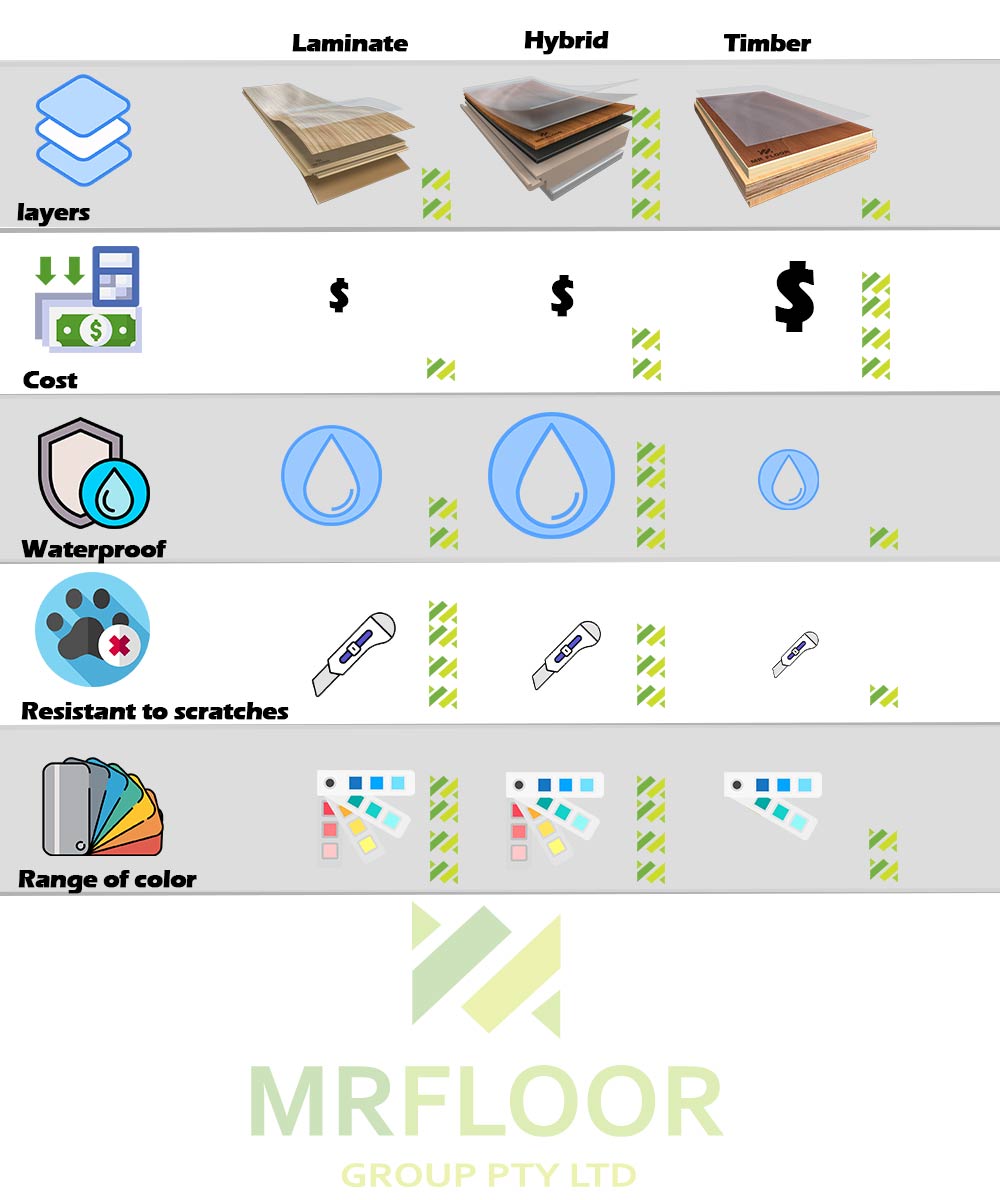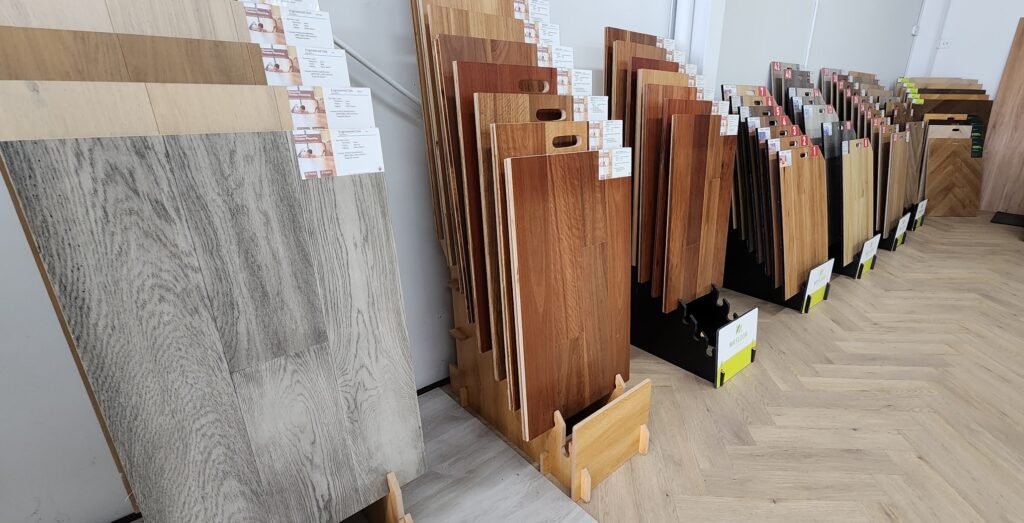Welcome to the ultimate guide on how to choose the perfect flooring for your space. Whether you’re renovating your home or revamping your office, selecting the right choosing is a crucial decision. But with so many options available, where do you even begin?
In this comprehensive step-by-step guide, we will walk you through the entire process of choosing the ideal flooring for any room. From understanding your needs and budget to considering the different types of flooring materials available, each step will bring you closer to finding the perfect fit.
Our expert advice, backed by years of experience, will help you navigate through the options, enabling you to make an informed decision that meets your aesthetic preferences, durability requirements, and maintenance expectations. We’ll also dive into the world of colors, patterns, and finishes to help you create the desired ambiance and style.
So, whether you’re looking for cozy carpets, elegant hardwood, or trendy vinyl, this guide has got you covered. Embrace the journey as we help you transform your space with the perfect flooring solution.
Importance of choosing the right flooring
Flooring is the foundation of any space, and it plays a crucial role in shaping the overall ambiance and functionality of a room. The choice of flooring can significantly impact the aesthetic appeal, durability, and even the resale value of your property. Whether you’re renovating your home or designing a new office, selecting the right flooring is a decision that requires careful consideration.
Choosing the perfect flooring can transform a space, elevating its visual appeal and creating a cohesive design that reflects your personal style. The right choosing can also enhance the comfort and functionality of a room, providing the necessary traction, insulation, and sound absorption. Additionally, the durability and longevity of your flooring choice can have a significant impact on the long-term maintenance and cost-effectiveness of your investment.
By taking the time to understand your needs, preferences, and the various flooring options available, you can make an informed decision that not only meets your current requirements but also stands the test of time. This guide will provide you with the necessary tools and insights to navigate the world of flooring and ensure that you make the perfect choice for your space.
Assessing your needs and preferences
Before delving into the vast array of flooring options, it’s essential to take a step back and assess your specific needs and preferences. This process will help you narrow down the choices and ensure that the flooring you select aligns with your lifestyle, budget, and design goals.
Start by considering the primary function of the room or space you’re looking to floor. Is it a high-traffic area that requires durable and easy-to-clean materials, or a more intimate space where comfort and warmth are the top priorities? Understanding the intended use of the space will help you prioritize the essential features you’re seeking in your choice.
Next, consider your personal style and the overall aesthetic you’re aiming to achieve. Do you prefer a classic and timeless look, or are you drawn to more contemporary and trendy designs? Evaluate the existing decor and furnishings in the space to ensure that the new flooring seamlessly integrates with the existing elements, creating a cohesive and harmonious visual experience.
Understanding different types of flooring options
The market offers a diverse array of options, each with its own unique characteristics and benefits. Familiarizing yourself with the various types of flooring can help you make an informed decision that aligns with your needs and preferences.
Hardwood flooring: Renowned for its timeless elegance and natural beauty, hardwood flooring is a popular choice for many homeowners and commercial spaces. Offering a range of species, grains, and finishes, hardwood floors can add warmth and character to any room. They are durable, easy to maintain, and can increase the resale value of your property.
Laminate flooring: Designed to mimic the look and feel of hardwood, laminate is a more affordable and low-maintenance alternative. Laminate planks feature a synthetic core topped with a high-resolution image of wood, providing a realistic appearance. They are highly durable, scratch-resistant, and suitable for high-traffic areas.
Pros and cons of each flooring type Timber Flooring Melbourne
Each type of flooring has its own set of advantages and disadvantages, and it’s essential to weigh these factors carefully to make the best decision for your space.
Laminate Flooring
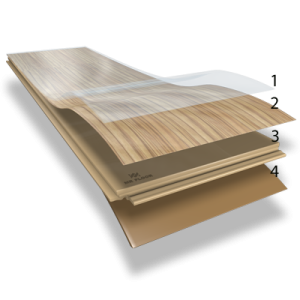
Pros
- Cost-Effective: Generally more affordable compared to timber and hybrid flooring.
- Durability: Resistant to scratches, dents, and fading.
- Ease of Installation: Often features a click-lock system for easy DIY installation.
- Variety: Available in a wide range of designs and colors that mimic the look of natural wood or stone.
- Low Maintenance:Easy to clean and requires minimal upkeep.
Cons
- Water Sensitivity: Not waterproof and can be damaged by prolonged exposure to moisture.
- Sound and Feel: Can be noisy underfoot and feel less comfortable compared to timber or hybrid flooring.
- Limited Repair Options: Difficult to repair if damaged; often requires replacing entire sections.
- Environmental Impact: Made from synthetic materials, which may not be as eco-friendly as natural timber.
Hybrid Flooring
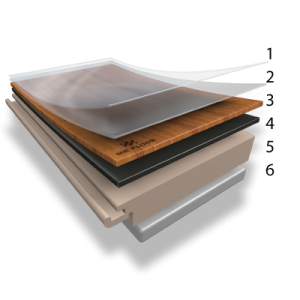
Pros
- Waterproof: 100% waterproof, suitable for wet areas like bathrooms and kitchens.
- Durability: Highly resistant to scratches, dents, and stains.
- Ease of Installation: DIY-friendly click-lock installation.
- Comfort: More comfortable underfoot compared to laminate and some hardwood options.
- Aesthetic Variety: Available in a wide range of designs that mimic natural wood or stone.
- Low Maintenance: Easy to clean and maintain.
Cons
- Cost: Generally more expensive than laminate flooring.
- Potential for Expansion/Contraction: Can expand or contract with temperature changes, requiring proper acclimation and installation.
- Subfloor Requirements: Needs a smooth and level subfloor for proper installation.
- Limited Repair Options: Individual planks can be difficult to replace if damaged.
Engineered Timber Flooring
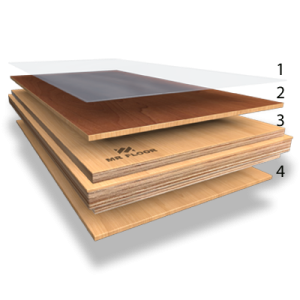
Pros
- Aesthetic Appeal: Natural beauty and timeless look that adds value to a home.
- Durability: Can last for decades with proper care and maintenance.
- Refinishable: Can be sanded and refinished multiple times to restore its appearance.
- Comfort and Warmth: Feels warm and comfortable underfoot, adding a cozy atmosphere to a space.
- Eco-Friendly Options: Sustainable timber options are available, making it an environmentally friendly choice.
Cons
- Cost: Generally more expensive than laminate and hybrid flooring.
- Maintenance: Requires regular maintenance, including sanding, polishing, and sealing.
- Water Sensitivity: Can be damaged by excessive moisture and not suitable for wet areas.
- Installation: More complex installation process, often requiring professional help.
- Susceptibility to Damage: Prone to scratches, dents, and fading over time.
Summary
- Laminate Flooring: Affordable, durable, and easy to install but not suitable for wet areas and difficult to repair.
- Hybrid Flooring: Waterproof, durable, and comfortable with easy installation, though more expensive and requiring specific subfloor conditions.
- Timber Flooring: Offers natural beauty, durability, and the option to refinish, but is costly, requires maintenance, and is not suitable for wet areas.
Considering your lifestyle and maintenance requirements
Your lifestyle and the level of maintenance you’re willing to commit to are crucial factors in selecting the right flooring for your space. Consider the daily activities, foot traffic, and potential sources of wear and tear in the room or area you’re looking to floor.
For high-traffic areas, such as entryways, hallways, or living rooms, you’ll want to choose an option that is durable, scratch-resistant, and easy to clean. Materials like hardwood, luxury vinyl plank (LVP), or tile may be better suited for these spaces, as they can withstand heavy use and are simple to maintain.
In contrast, bedrooms and other more private areas may benefit from softer, warmer flooring choices like carpets or rugs. These materials can provide a cozy and inviting atmosphere, while also offering sound absorption and insulation properties.
Evaluating the durability and longevity of different flooring materials
Durability and longevity are essential considerations when selecting flooring, as they directly impact the long-term performance and cost-effectiveness of your investment. Some flooring materials are inherently more durable and long-lasting than others, and understanding these differences can help you make an informed decision.
Hardwood floors, for example, are renowned for their exceptional durability and can last for decades with proper care and maintenance. They can be refinished multiple times, extending their lifespan and preserving their beautiful appearance. On the other hand, laminate flooring, while highly durable, typically has a shorter lifespan compared to hardwood and cannot be refinished as easily.
Tile and luxury vinyl plank (LVP) flooring are also known for their exceptional durability and resistance to wear and tear. These materials can withstand heavy foot traffic, spills, and even water exposure, making them ideal choices for high-activity areas. Carpets, while offering a cozy and comfortable feel, may have a shorter lifespan and require more frequent replacement or deep cleaning to maintain their appearance.
Budgeting for your flooring project
Budgeting is a crucial aspect of any flooring project, as the cost can vary significantly depending on the type of material, the size of the area, and the complexity of the installation. It’s important to establish a realistic budget that takes into account not only the initial purchase price but also the long-term maintenance and potential replacement costs.
When budgeting for your flooring project, consider the following factors:
- Material cost per square foot: This includes the cost of the flooring itself, as well as any necessary underlayment or subfloor preparation.
- Installation costs: Factor in the labor and expertise required to properly install the flooring, which can vary depending on the complexity of the job.
- Removal and disposal costs: If you’re replacing existing flooring, account for the cost of removing and disposing of the old material.
- Ongoing maintenance and repair costs: Some flooring materials require more frequent cleaning, sealing, or refinishing, which can add to the long-term costs.
By carefully evaluating your budget and prioritizing the features that are most important to you, you can find the perfect balance between quality, durability, and cost-effectiveness.
Choosing the right color and design
The color and design of your flooring can have a significant impact on the overall aesthetic of a space, so it’s essential to choose wisely. Consider the existing decor, the amount of natural light in the room, and your personal style preferences to select a flooring option that complements and enhances the overall look and feel of the space.
For a classic and timeless look, opt for neutral tones like beige, gray, or natural wood shades. These colors work well in a variety of settings and can create a cohesive and harmonious environment. If you’re looking to add a touch of warmth and character, consider richer wood tones or even patterned options like herringbone or chevron.
In rooms with abundant natural light, lighter flooring colors can help to brighten the space and create a sense of openness. Conversely, in more intimate or low-light areas, darker flooring choices can add depth and coziness. Ultimately, the color and design of your flooring should be a reflection of your personal style and the desired ambiance you wish to create.
Hiring a professional flooring installer
While it’s possible to tackle a flooring installation project as a DIY endeavor, it’s often advisable to hire a professional flooring installer to ensure a high-quality, long-lasting result. Experienced installers have the necessary skills, tools, and expertise to properly prepare the subfloor, lay the flooring, and ensure a seamless and visually appealing finish.
When hiring a professional installer, consider the following:
- Credentials and experience: Look for installers with a proven track record of successful projects and the appropriate certifications or licenses.
- Warranty and guarantees: Reputable installers should offer warranties or guarantees on their workmanship, providing you with added peace of mind.
- Attention to detail: A skilled installer will pay close attention to the layout, seams, and transitions to create a polished and cohesive look.
- Efficient and timely completion: A professional installer should be able to complete the project within the agreed-upon timeline and with minimal disruption to your daily routine.
By entrusting your flooring installation to a qualified professional, you can ensure that your new floors are installed correctly, maximizing their lifespan and performance.
Conclusion: Enjoying your perfect flooring choice
Choosing the perfect flooring for your space is a journey that requires careful consideration, research, and decision-making. By following the steps outlined in this comprehensive guide, you can navigate the flooring landscape with confidence and make an informed choice that aligns with your needs, preferences, and budget.
Remember, the right choosing can transform the look and feel of a room, enhancing its overall functionality and value. Whether you opt for the timeless elegance of hardwood, the low-maintenance convenience of laminate, or the durability of luxury vinyl plank, your new floors will become the foundation for creating a space that truly reflects your personal style and lifestyle.
Embrace the process, explore the various options, and trust your instincts. With the right flooring choice, you can create a space that you’ll love to come home to, day after day. Enjoy the journey and the satisfaction of finding the perfect flooring solution for your space.
